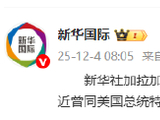Insights into China's Diverse Provincial Challenges

Precision Education and Decentralized Governance in Guangxi
In a striking move, Nanning, the capital of Guangxi Zhuang Autonomous Region, has intensified its focus on targeted educational interventions to combat official corruption. A recent article from Sina highlights an elaborate warning education campaign designed to make lessons of past transgressions personal and impactful. The so-called "three-step method" incorporates individualized profiles and technology to curate specific educational content for government officials, aiming at preventing corruption from its roots. The initiative has already prompted 20 officials to voluntarily report their corrupt activities, a significant success in fostering accountability.
Sina's narrative emphasizes a proactive and systemic approach to tackling corruption through education while highlighting the moral obligations of officials. This method of using personal histories and local case studies projects a sincere attempt to reach the 'hearts and minds' of bureaucrats, perhaps to restore trust within the system.
Revamping Grassroots Supervision in Villages
Grassroots governance remains a critical segment, particularly in rural landscapes, as demonstrated by efforts in Guangxi and surrounding areas. According to another Sina article, the challenge of overseeing village-level authorities is being addressed through systematic restructuring. The highlighted shortcomings, such as 'unwillingness to supervise,' are being countered by enhancing communication frameworks and integrating diverse supervisory bodies.
These insights illustrate a movement towards transparency, as evidenced by the emphasis on management innovation and cooperative enforcement. While the narrative from Sina champions the success in breaking longstanding barriers in village governance, it raises questions about the efficiency and execution hurdles in a country as vast and populous as China. The portrayal suggests a pivot towards a more integrated, data-driven oversight network that can internationally inspire robust local governance models.
Balancing Natural Resource Optimization with Smart Growth
In an age of resource constraints, the coverage from CCTV of sustainable developments in provinces like Jiangsu stands out. Projects like mine rehabilitation and urban redevelopment represent a broader palette of conservation strategies that optimize finite resources. For instance, the transformation of derelict areas into sustainable and productive zones benefits not just municipal economies but also sets a precedent for global environmental policies.
CCTV emphasizes innovative land-use models such as "urban of vertical integration" and smart industrial regeneration. This coverage underscores China's strategic pivot to blend ecological considerations with economic ambitions, showcasing practical examples like green production techniques in previously industrial zones. This duality offers pathways for developing countries grappling with similar modernization challenges.
Guangxi’s Rural Revitalization through Collective Asset Management
A detailed examination of collective asset management issues in Guangxi, shared by Sina, brings rural economic governance under scrutiny. By spotlighting the misuse of village funds and the resultant disciplinary actions, the article documents an ongoing recalibration of rural administration. The emphasis is on turning lessons learned from past failures into a structured path for asset utilization and growth in these communities.
This narrative portrays rural governance as a central tenet in China's domestic agenda, reinforced by central government support evident in directives from the 20th Central Committee meeting. Such regulations are gaining attention for proactively remediating rural defects, aiming not only at compliance but considerable socio-economic upliftment.
Investments in Local Enterprises and International Ventures
The road to global market cohesion is being paved by enterprising models as revealed in Jiangsu's corporate strategies - vividly detailed by Sina. The focus is on strengthening technological advancements and international footprint, particularly in niche markets like healthcare equipment and intelligent home appliances.
Focusing on "going global," these enterprises leverage innovation and emerging market dynamics to sustain robust export growth, showcasing effective business science that underpins China's steady ascent as an industrial powerhouse. The synergy between local enterprises and global market requirements resonates universally, reiterating business agility in an era of digital transformation.
Reframing Asia's Future: Boao Forum Highlights
The Sina coverage of the Boao Forum frames the broader agenda of regional cooperation and sustainability. The thematic discussions emphasized collaborative growth and innovative governance as Asia navigates political and economic upheavals. China's diplomatic overtures and policy innovations at such forums underscore its intention to shape Asian futures on collaborative premises.
Drawing insights from vibrant discourse at the forum, the narrative highlights Asia as a focal point for sustainable development practices and cross-border cooperation. This harmony-driven paradigm challenges the global norms of competitiveness with a cooperative narrative that reflects shifting geopolitical influences.



